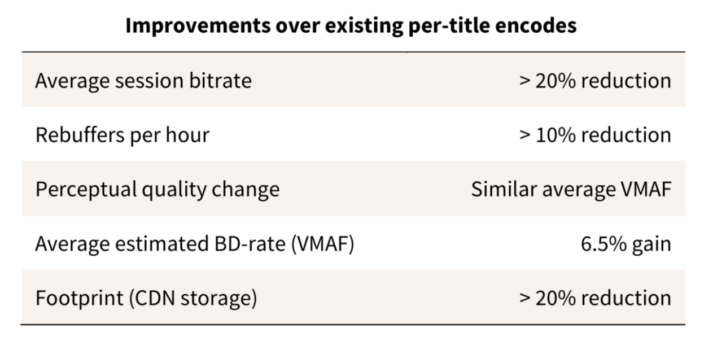Netflix has revealed a number of innovations as it aims to deliver the best viewing experience to its customers, particularly those using legacy decoders.
In a post on its blog, the Netflix tech team detailed a number of developments it has employed to devices which can’t be upgraded to use the latest decoders due to memory limitations, device upgrade cycles, etc.
To that end, the team has made a number of improvements to its H.264/AVC Main profile per-title encodes.
Netflix detailed the improvements:
- Instead of relying on other objective metrics, such as PSNR, VMAF is employed to guide optimisation decisions. Given that VMAF is highly correlated with visual quality, this leads to decisions that favour encodes with higher perceived quality.
- Allowing per-chunk bitrate variations instead of using a fixed per-title bitrate, as in its original complexity-based encoding scheme. This multi-pass strategy, previously employed for the streamer’s mobile encodes, allows it to avoid over-allocating bits to less complex content, as compared to using a complexity-defined, albeit fixed, bitrate for the entire title. This encoding approach improves the overall bit allocation while keeping a similar average visual quality and requires little added computational complexity.
- Improving the bitrate ladder that is generated after complexity analysis to choose points with greater intelligence than before.
- Further tuning of pre-defined encoding parameters.
According to the blog, the team found a number of improvements over existing per-title encodes:

The full post can be read on Netflix’s tech blog.







